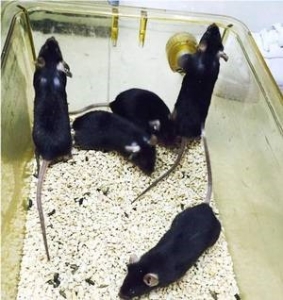Inhaling polluted air can lead to brain damage
From The Hindu, September 5, 2020
Inhaling polluted air can lead to brain damage

September 05, 2020 20:47 IST
Updated: September 05, 2020 22:31 IST
Share Article

Even design: In the study, eight male mice were exposed to polluted air and eight controls to filtered air. | Photo Credit: Saira Hameed
Mice exposed to dirty air formed amyloid deposits and tangles in the brains
New research on mice shows that continually inhaling dirty air could be bad not just for the lungs but could also damage the brain tissue. In the study, led by Richard N. Zare of Stanford University, eight male mice were exposed to polluted air, and eight controls were exposed to filtered air. Afterwards, on examining the brain tissues of the 16 mice, the researchers found that the mice that inhaled dirty air had developed amyloid deposits, neurofibrillary tangles and plaques, while those that had inhaled filtered air showed no such developments. The study was conducted at the chemistry department of Fudan University of Shanghai, China, and the results are presented in a paper that has been accepted for publication in the journal Talanta Open.
Damaged brains
While the whole experiment lasted two years, the mice were exposed to dirty air six days a week, eight hours a day, for 24 weeks (six months). The researchers used a number of different analytical techniques to examine different tissues. “Of course, the lungs… were quite different – but I had not expected to find what my postdoc, Dr. Saira Hameed, observed, namely damage to the brains of all the mice exposed to dirty air but essentially no damage in the brains of mice exposed to clean air,” says Prof. Zare, who is with the Department of Chemistry of Stanford University, California, in an email to The Hindu.
As for the concentration of PM2.5 that made up the dirty air for the experiment, Jinzhuo Zhao, from Department of Environmental Health, School of Public Health, Fudan University, says, “We used 70 microgram per cubic metre to perform the study.” This is about twice the average value of PM2.5 seen in Shanghai.
Dirty air and clean air
“The exposure system we used in this study could filter the ambient PM2.5 [which was then given to the controls]. The composition of filtered air is similar with the outdoor air from which PM2.5 has been filtered,” says Dr Zhao, who is an author of the study, in an email to The Hindu. “However, the system cannot completely filter the PM2.5, so a little PM2.5 still exists in the filtered air.”
The brains of mice exposed to dirty air showed tangles and plaques as well as neurofibrillary inflammations. “In addition, we made a chemical analysis, and we found upregulation (concentration increase) in ceramide and sulfatides,” Prof. Zare explained.
Alzheimer’s disease
Earlier studies have shown that ceramide is directly involved in the aggregation of amyloid beta and the progression of Alzheimer’s disease. Sulphated galactosyl ceramide, also known as sulphatides (ST), are found in abundance at the myelin sheath of brain cells.
“We found upregulation of sulphatide in the brain tissues from dirty air compared to the filtered air, suggesting damages in the myelin sheath and blood-brain function dysfunction as a result of particulate matter exposure,” says Prof. Zare. “This hypothesis is supported by previous reports that have shown that the expression levels of sulphatides are associated with the physiological activity of the blood-brain barrier, and increased concentration of sulphatide has impact on myelin sheath at early stages of HIV-1 infection.”
